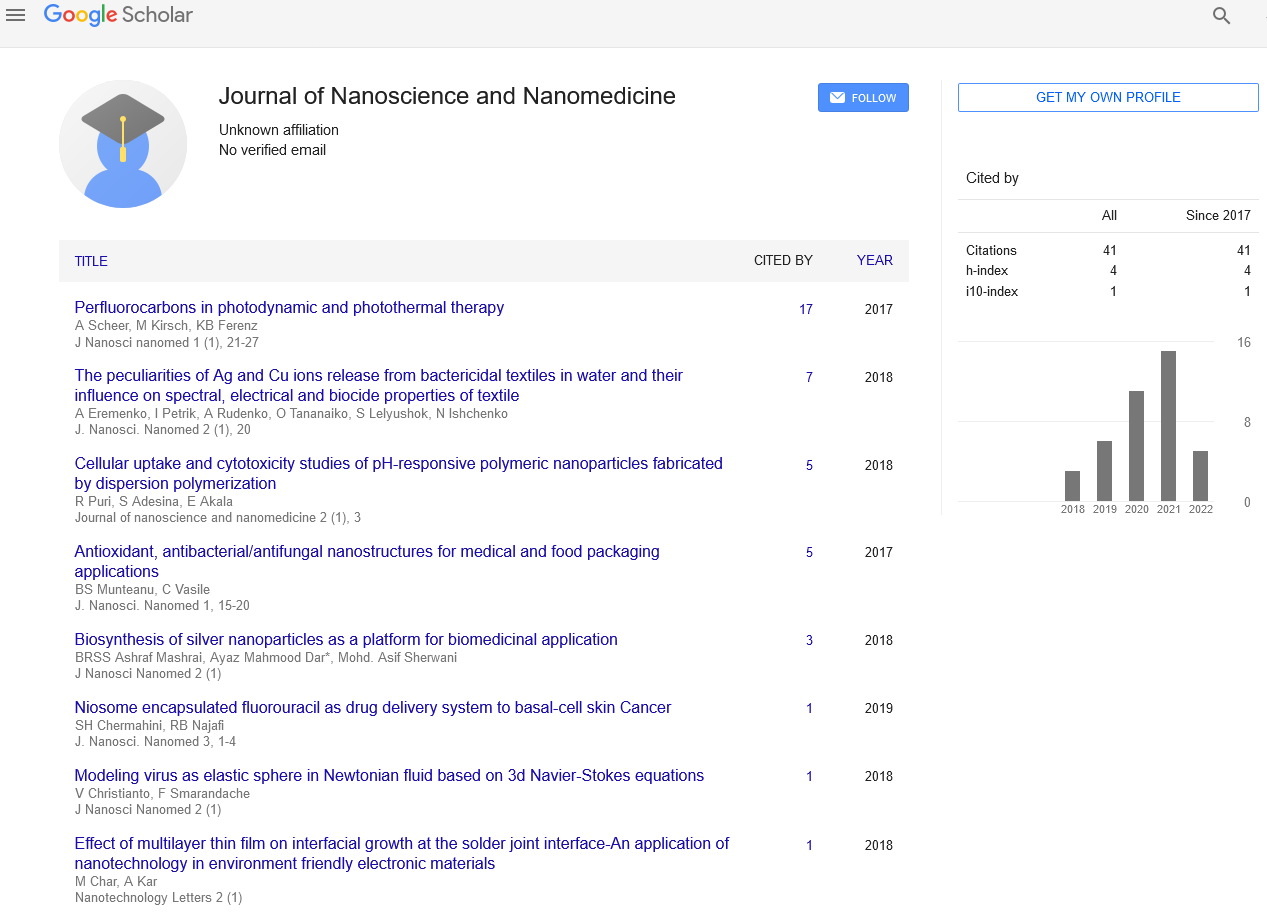How safe and efficient is Nanotecnology?
Received: 12-Sep-2017 Accepted Date: Sep 20, 2017; Published: 27-Sep-2017
Citation: Ana Paula da Costa Ribeiro. How safe and efficient is Nanotecnology? Nanotechnology Letters. September-2017;1(1):3
This open-access article is distributed under the terms of the Creative Commons Attribution Non-Commercial License (CC BY-NC) (http://creativecommons.org/licenses/by-nc/4.0/), which permits reuse, distribution and reproduction of the article, provided that the original work is properly cited and the reuse is restricted to noncommercial purposes. For commercial reuse, contact reprints@pulsus.com
Nanotechnology became widespread quite rapidly and this emerging area still needs to grow in its responsibilities and implications for the environment and for humans. Most of us use emerging engineered nanomaterial’s (ENM) or ENM-containing products without an idea of the risks associated with them. Our understanding of the occupational, health and safety aspects of ENMs is still in its childhood stage. At the same time, they are being used in most areas of interest, such as energy (solar or photovoltaic), biomedicine, to create renewable sources of electricity, or in material science, to create stronger and lighter components for transport, electronics or new products. However, there is still an unexplored side to this novel ENM, that could promote adverse impacts on the environment or human health. These characteristics need to be evaluated as early as possible in the development stage, so to avoid unforeseen or unexpected repercussions in a near future. It is of pivotal interest to ensure that proper regulation is applied. In a very interesting perspective, published by Michael P. Tsang and co-authors [1], they claim that the widespread use of nanotechnology should be carefully evaluated to ensure that potentially new hazards to the environment or to human health are properly identified. This is achieved through risk assessment (RA) procedure, while the effect in the environment, due to nanotechnology procedures, is known as lifecycle assessment (LCA). The aim of RA is to measure or calculate absolute values of exposure, as opposed to the relative values of exposure calculated in LCA. The importance of absolute values are that they can be compared to established regulatory reference values (for example, acceptable daily intake, ADI; threshold limit value, TLV). In their Perspective [1]. Tsang et al. advocate that risk assessment and life-cycle assessment should be integrated in a methodological level. In this work, they outline three levels of integration of LCA and RA at the methodological level and complement with an additional approach for regulatory purposes. They outline 3 levels of integration, where the lowest level, known as site generic estimates ecological or human health impacts due to engineered nanomaterials (ENM). The second level is site dependent and incorporates thermodynamic and kinetic considerations using dynamic fate and exposure models. The third and final level refers to site specific integration, where a case-by-case modeling approach is required. The great importance of the integration procedures relies in the possibility of assessing the nanomaterials from early stages.This strategic guidance provides a tool for the promotion and support of new and existing nanotecnologies and the assessment of pertinent developments in this area. It is fundamental that the need of assessing nanomaterials by refining the methods (incorporating elements of RA into LCA, for example) will be fulfilled and complete data about the environmental effect of nanomaterials will be provided for regulation purposes.The next step, in my opinion, is the introduction of parameters depending on the type of nanoparticle and its intrinsic properties, since nanoparticles can vary from lethal to non-hazardous. In addition, a morphologic parameter (for the size, shape, composition, and surface properties) can also be proposed, considering that they are fundamental for the performance of engineered nanomaterials.





